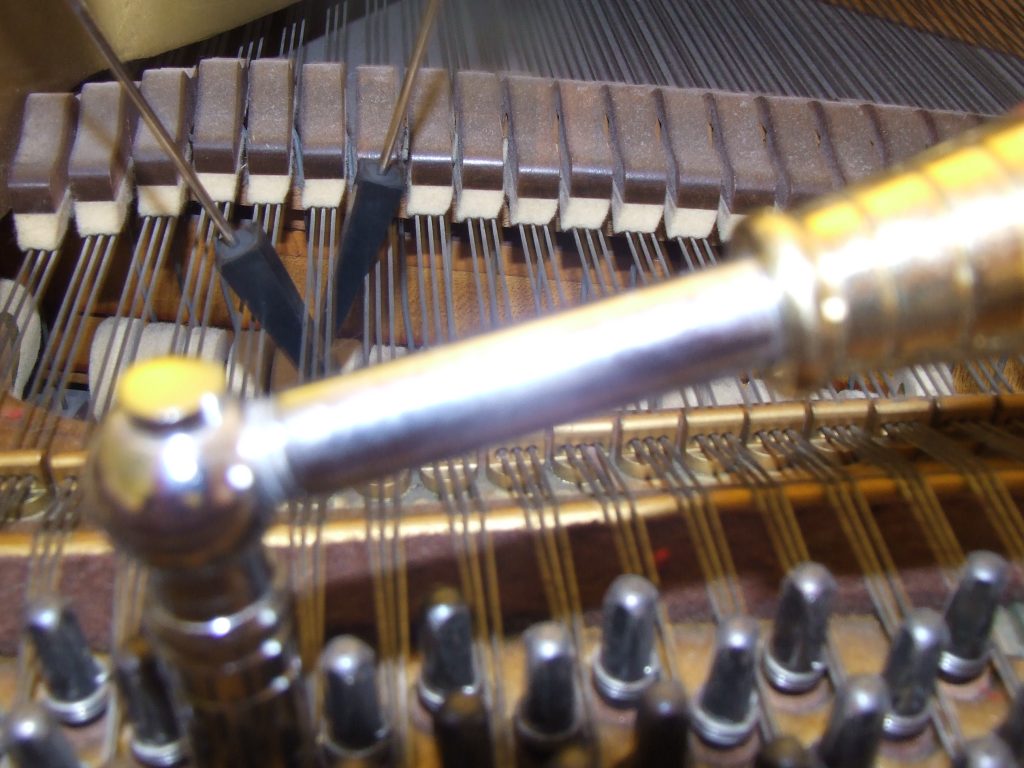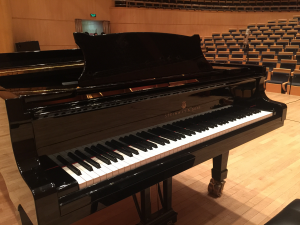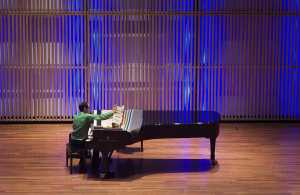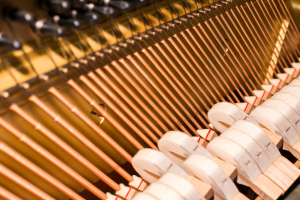Piano tuning in Alabama by the Piano Surgeon
Piano tuning is the act of making minute adjustments to the tensions of the strings of an acoustic piano to properly align the intervals between their tones so that the instrument is in tune. The meaning of the term 'in tune', in the context of piano tuning, is not simply a particular fixed set of pitches. Fine piano tuning requires an assessment of the vibration interaction among notes, which is different for every piano, thus in practice requiring slightly different pitches from any theoretical standard. Pianos are usually tuned to a modified version of the system called equal temperament.

By Onascout - Own work, CC BY-SA 3.0, Link
In all systems of tuning, every pitch may be derived from its relationship to a chosen fixed pitch, which is usually A440, the note A above middle C (261.626 Hz).
Many piano manufacturers recommend that pianos be tuned twice a year.
Many factors cause pianos to go out of tune, particularly atmospheric changes. For instance, changes in humidity will affect the pitch of a piano; high humidity causes the soundboard to swell, stretching the strings and causing the pitch to go sharp, while low humidity has the opposite effect. Changes in temperature can also affect the overall pitch of a piano. In newer pianos the strings gradually stretch and wooden parts compress, causing the piano to go flat, while in older pianos the tuning pins (that hold the strings in tune) can become loose and don't hold the piano in tune as well. Frequent and hard playing can also cause a piano to go out of tune. For these reasons, many piano manufacturers recommend that new pianos be tuned four times during the first year and twice a year thereafter.
Credit: Piano Tuning





